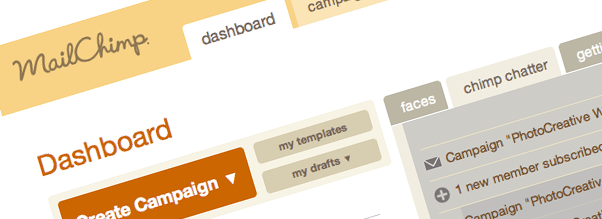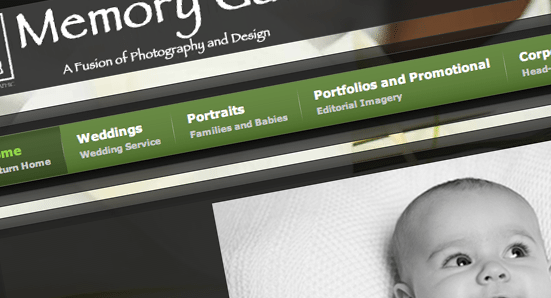There are dozens of tools you’ll need to set up a successful photography business. The bad news is that simply owning a nice camera doesn’t make you a professional photographer…… although sadly some folk seem to think it does!
We’re going to be looking at some of the essential tools you’ll need to acquire in at least the first year (if not the first month) of your business. There are cheaper alternatives to some of the suggestions I make but my advise is buy the best you can afford otherwise you’ll end up paying twice for it.
Many of the suggestions are in fact free so I am suggesting some the cheapest tools you can source! In time you’ll make upgrades but these suggestions are a good place to start.
Part 1 – Software and Online presence
In this section we’re going to be looking at your businesses digital presence and just some of the software you’ll be needing. Of course there are dozen of other programs and applications that I use that I’m not going to mention here but this is just dealing with the essentials.
Photoshop
I’m going to start off with the most obvious as it really has to be THE essential tool for a photography business. Lightroom and Aperture are both great tools but if I had a choice of only one then I wouldn’t think twice about shouting Photoshop at the top of my lungs.
The reason this is such an easy choice for me is that running a photography business is not just about processing images. You’re going to be doing lots of design work that other software just isn’t built for.
Photoshop does also have the advantage of working very well with other programs. At a later stage you’ll be adding other programs like InDesign or the very powerful (and free) PhotoJunction from Queensbury then Photoshop works wonderfully with both.
In the beginning Photoshop is probably going to be one of your most expensive acquisitions, but know that even Photoshop Elements can be upgraded to a full version eventually if cash is tight.
Email Marketing
Google Wave wasn’t the email killer it hoped to be and Email marketing isn’t dead. It’s a very well having a blog update every time you press your shutter but the best way to stay connected (other than in person of course) is email.
MailChimp is a favourite of mine and makes organising campaigns and lists nice and easy.
Your Website
I think what’s important in the beginning is to have a website that even if you don’t design yourself, you still have the option to upgrade in the future. This is why I’d recommend steering clear of ‘out of the box’ websites. These sites might serve there purpose very well for a while but I can almost guarantee that you’ll become frustrated with their limitations over time.
For me, using an open source content management system (CMS) is the way to go. My personal preference is Joomla and WordPress. Both CMS’s have a large support communities and countless plugins and themes are available. The WordPress community is somewhat larger than the Joomla one and you’re more likely to have to pay for Joomla extensions whereas most WordPress plugins are (for the most) free.
I find WordPress generally a little easier to use. WordPress.com sites can be easily upgraded to self hosted ones so if you just want to start off with a free site then that is a good place to start.
If you’re not that familiar with either CMS (or you don’t have the time) then I’d advise getting someone to at least design the basic structure and this will allow you time to learn the basics an add upgrades when you’re ready.
Your database
My database is a very sophisticated piece of software called Excel (actually I use Numbers coz I’m Mac but it’s basically the same thing). There are some really good database systems out there that are aimed at photographers but if cash is tight then Studio Cloud is worth a look….. and it’s free!
A Google Account
The best free online account you’ll ever sign up for…… even if you never send a email from it. The biggest benefit is of course Google Analytics but this is just the tip of the iceberg. Webmaster Tools, calendars, file sharing, Picasa….. I could go on but I’m sure you get the idea.
Print Galleries
I wouldn’t primarily focus your sales on to online print galleries but whatever type of photography you do there is a chance at some point you’ll need to utilise an online gallery.
The best (and easiest) ones are supplied by professional labs. As this isn’t going to be your main source of income then I’m sure you’ll be happy for a professional lab to take a small cut of the profits in return to taking your orders, printing them (properly…. colour correction etc) , taking the money and shipping them directly to your client?
Do your research and see what your local lab offers. There are larger more well know companies that offer these services but make sure you know all of your options.
It is nice to have direct payment which brings me on to the next recommendation…..
A PayPal Account
Its nice getting paid and this is just one of the many ways you might be receiving money……. why wouldn’t you have an easy way for someone to pay you?
A Skype Account
Free video calls with the ability to transfer large files…… can’t complain. If you really want to ‘connect’ with your clients then you can add a Skype button to your website so that people can see when you’re available and give you a (free) call.
Twitter, Facebook and social networks
I love Twitter but it’s not for everyone. It is social networking and it’s all about what you put in.
Don’t expect to get 1000 Facebook fans and and half a million Twitter followers overnight. Share, engage and enjoy!
*The Current Photographer website contains links to our affiliate partners. Purchasing products and services through these links helps support our efforts to bring you the quality information you love and there’s no additional cost to you.
Michael has been working as a photographer for the last ten years. In that time he has shot over 100,000 peoples’ portraits and worked in four different continents. In 2001 Michael graduated with a degree in photography from Manchester Metropolitan University.



Thanks for the tips! 🙂
Solid overview. Thank you.
What about financial software, for invoicing, tracking expenses, etc…? I use QuickBooks, but there are many others focused on photography businesses (StudioPlus, BlinkBid, etc.)…
Great article and as for financial software I prefer Successware. I once used Quickbooks but I think Successware is much more thorough for a photographer to track everything in the studio.
RT @TrevorCurrent: Tools for Your Photography Business – Software and Online Presence. Suggestions to help get you started. http://cpurl …
RT @TrevorCurrent: Tools for Your Photography Business – Software and Online Presence. Suggestions to help get you started. http://cpurl …
RT @TrevorCurrent: Tools for Your Photography Business – Software and Online Presence. Suggestions to help get you started. http://cpurl …
RT @TrevorCurrent: Tools for Your Photography Business – Software and Online Presence. Suggestions to help get you started. http://cpurl …
RT @TrevorCurrent: Tools for Your Photography Business – Software and Online Presence. Suggestions to help get you started. http://cpurl …
RT @TrevorCurrent: Tools for Your Photography Business – Software and Online Presence. Suggestions to help get you started. http://cpurl …
I’d have LR3 over Photoshop… get it right in camera so you don’t have much correcting to do afterwards….
RT @TrevorCurrent: Tools for Your Photography Business – Software and Online Presence. Suggestions to help get you started. http://cpurl …
RT @TrevorCurrent: Tools for Your Photography Business – Software and Online Presence. Suggestions to help get you started. http://cpurl …
Sound advice Michael.
Hi! I would add http://www.litmind.com to this list. It’s a social network for professional photographers where they can find models, stylists, make-up artists, agencies and other resources for their shootings!